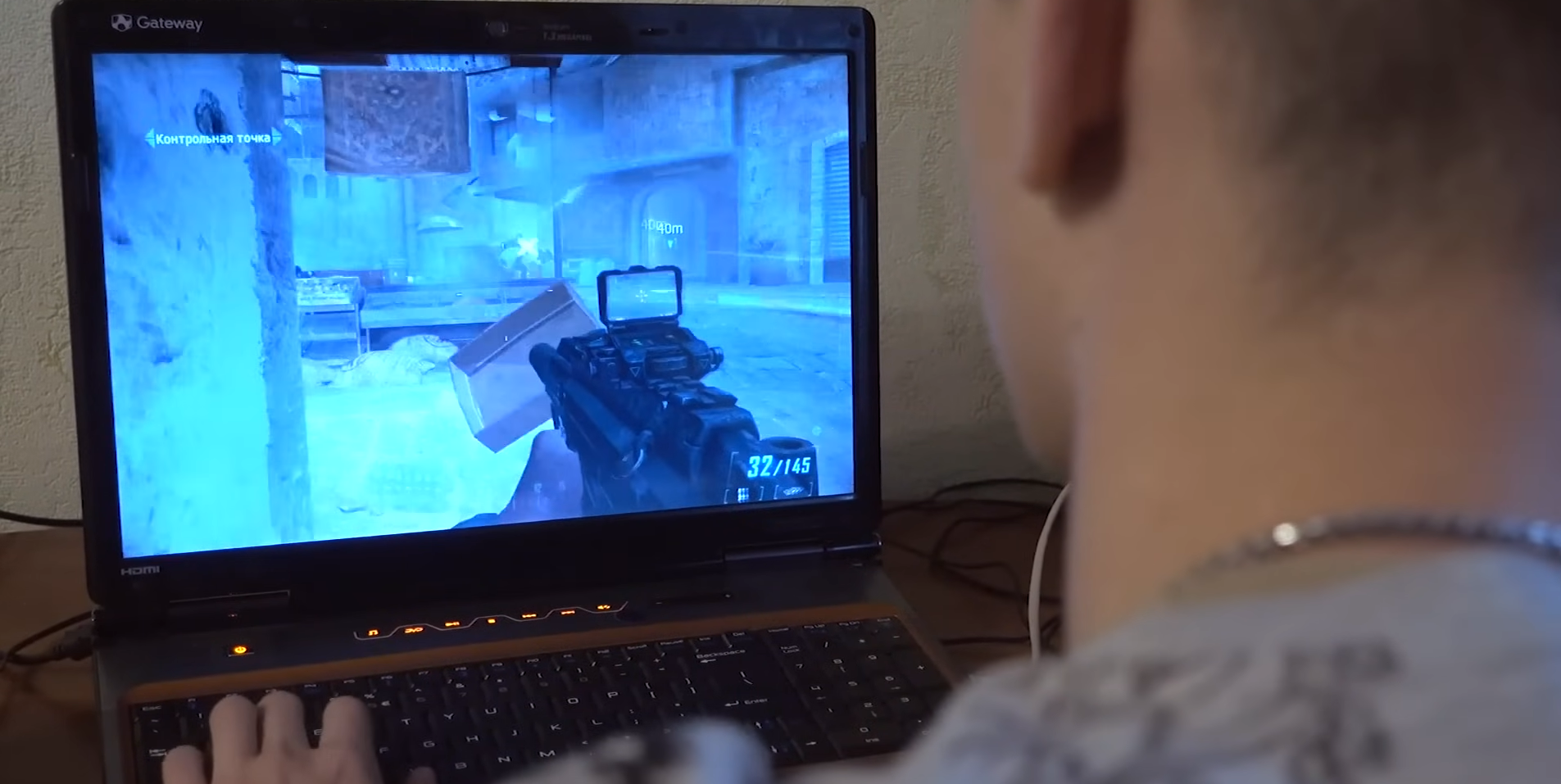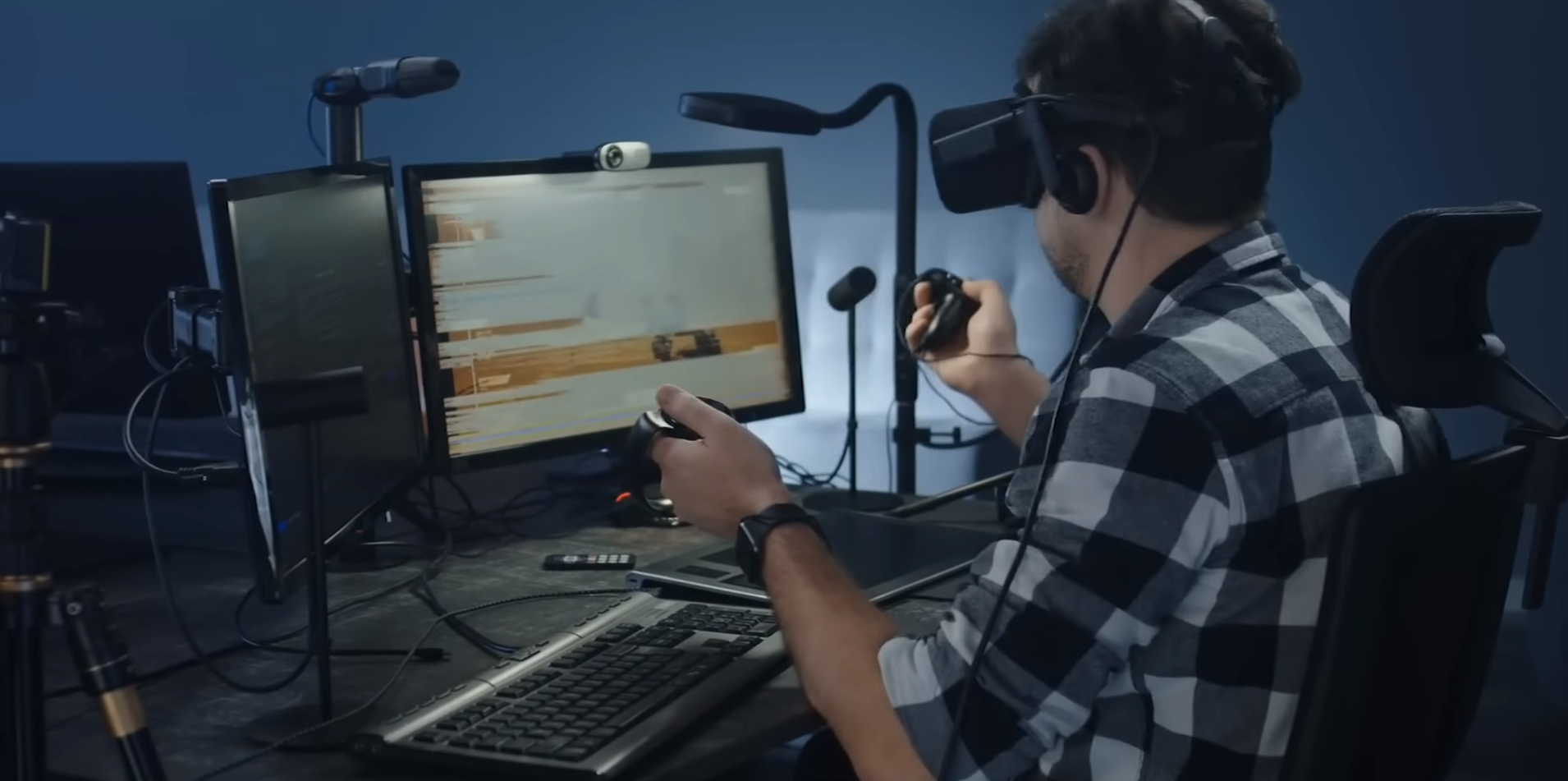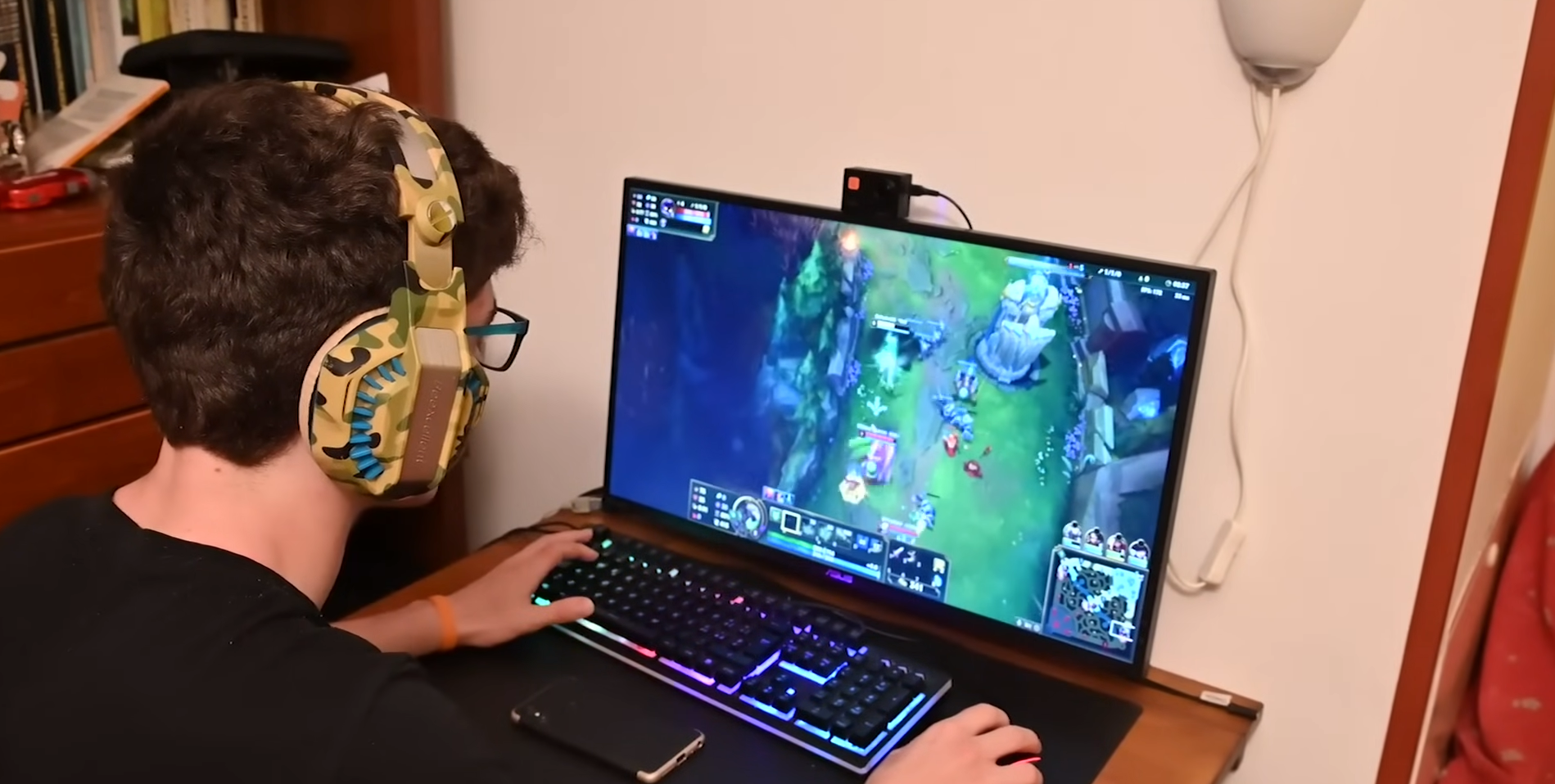Do you crave gaming that’s smooth, seamless and totally immersive? If so, then the refresh rate of your games is one factor you don’t want to overlook. It isn’t just gamers who get a kick out of fast-paced action; developers too love to get their hands on cutting edge tech like high refresh rates for games. But what exactly does it mean? How is it impacting your gaming experience? And, perhaps most importantly: how can you optimize this crucial component for an optimal gameplay session every time?
In this blog post, we’ll explore the ins and outs of game refresh rate – from its significance in the world of competitive console and PC gaming, right through to our ultimate recommendations on ways to improve yours. Read on (if you dare!) to find out more…
Table of Contents
What Is A Refresh Rate?
A refresh rate is the frequency at which a display’s image is updated or “refreshed”. It’s measured in Hertz (Hz) and is basically a measure of how many times per second the display can draw a new image on the screen. The higher the rate, the smoother motion will appear on your screen as it refreshes more often with new images. These are typically seen in ranges from 60Hz all the way up to 240Hz for modern gaming displays.
When choosing a monitor, it is crucial to make sure that its refresh rate matches that of its video source. Otherwise, you may see some choppiness or stuttering when viewing certain types of content. Additionally, if you plan on playing video games, a higher rate can provide a better gaming experience by eliminating screen tearing and input latency. Higher rates also require more powerful hardware to achieve, so make sure that your graphics card and processor are capable of delivering the required performance for higher refresh rates. [1]
The most popular standards supported by displays today include 60Hz, 75Hz, 120Hz, 144Hz, 165Hz, 180Hz, 200Hz and 240Hz. Most modern monitors come with at least 60Hz but it is important to check if your sources can support higher frequencies before investing in them. Additionally, some monitors can be overclocked to run at slightly faster refresh rates than what they are rated at although this practice may void warranties and is not recommended for beginners. [2]
What Does Refresh Rate Depend on?
It depends on a couple factors. First, the type of display you’re using will affect the refresh rate. For example, LCD monitors usually have lower refresh rates than LED displays because LCDs tend to update slower.
Secondly, your graphics card plays a major role in determining your maximum possible rate for any given monitor — older cards might not support higher refresh rates while newer ones may be capable of pushing much faster speeds.
The resolution of your screen can also play a part in determining how high your rate can go. So if you’re looking to maximize your gaming experience with high frame rates and smooth visuals, make sure that all three of these components are up to date. [3]
Refresh Rate vs. Frame Rate: What’s the Difference
These are two concepts which are often confused. The main difference between them is that refresh rate refers to how many times per second a display refreshes its image, while frame rate refers to how many frames per second a video source can provide.
Refresh rates are measured in Hertz (cycles per second) and it tells us how many times an image is refreshed on screen each second. For example, if a monitor has a 60 Hz refresh rate, it means that the image will be refreshed 60 times in one second. This number determines how quickly images can change on the screen when gaming or watching movies or videos. Higher refresh rates generally result in smoother visuals as they allow for more frames to be displayed per second. [4]
It’s essential to remember that having higher refresh rates and/or frame rates doesn’t necessarily guarantee better visuals. It is also necessary to have good hardware (CPU, GPU, and display) in order to take advantage of these higher rates. [5]
What Is Screen Resolution?
Screen resolution is the number of horizontal and vertical pixels that a computer monitor can display. It is typically expressed in terms of width × height, with the units in pixels. For example, a resolution of 1280 × 1024 means the width is 1280 pixels and the height is 1024 pixels. Higher resolutions generally result in sharper images on screen, but may require more computing power to render correctly.
Monitor manufacturers typically list their resolutions in terms of dot pitch, which is the distance between two adjacent pixels. The smaller the dot pitch, the sharper the images on screen. Dot pitch is usually expressed in millimeters (mm). For example, a 10 mm dot pitch would result in more distinct images than a 20 mm dot pitch. Different monitors may have different optimal resolutions that work best for them. This should be taken into account when choosing a monitor or setting its resolution.
Setting an incorrect screen resolution can cause eye strain and headaches due to eyestrain from viewing small text and objects on a too high resolution or blurred images on a too low resolution display. It is important to set the right screen resolution for your computer monitor for maximum comfort and productivity. [6]
In addition to native resolutions, some monitors may support additional resolutions. Most modern displays will scale up or down from the native resolution, resulting in either blurred or pixelated images depending on how well they are scaled. Some displays may also utilize various features such as black frame insertion (BFI) to improve motion clarity when working with lower refresh rates. BFI works by inserting an extra image between frames that makes motion appear smoother and less blurry. [7]
To find out what screen resolution is best for your needs, it’s important to consider the type of work you’ll be doing, the size of your display, and its native resolution. If you’re looking for a sharper image with more detail, a higher resolution is usually the way to go. But if you want smoother motion performance or have limited computing power, scaling down to get a lower resolution may be worth considering.
How Do Refresh Rate And Screen Resolution Affect Gaming?
When it comes to gaming, refresh rate and screen resolution are two of the most important factors to consider. The higher the refresh rate, the smoother a game can run. Screen resolution is measured in pixels and determines how crisp and clear images appear on a display. A higher resolution allows for more detailed and immersive visuals while playing games.
In addition to refresh rate and screen resolution, response time also plays an important role when it comes to gaming performance. Response time is measured in milliseconds (ms) and determines how quickly a display can transition between different shades of color without leaving any trace behind. Having a low response time is essential for gamers who are looking for smooth gameplay during fast-paced action scenes and multiplayer matches.
There’s no one answer when it comes to the ideal refresh rate and screen resolution for gaming as everyone has different preferences and needs. Just make sure to invest in an appropriate display that has the right refresh rate and screen resolution for your preference. [8]
What’s The Best Refresh Rate And Screen Resolution For Gaming?
The best refresh rate and screen resolution for gaming will ultimately depend on the type of game you are playing. A good rule of thumb to start with is that a 60 Hz refresh rate with a 1080p resolution should be enough for most types of games. If you’re playing competitive or fast-paced games, it’s generally recommended to use 120 Hz or 144 Hz monitors as they offer better response times and input lag.
Higher resolutions such as 4K might also provide an advantage in certain titles, but this won’t necessarily improve your overall gaming experience if you don’t have the necessary hardware to support it. Ultimately, the best refresh rate and screen resolution will depend on your needs. If you’re playing competitive or fast-paced games, picking a higher refresh rate should be prioritized over resolution. However, if you’re looking to enjoy immersive visuals, it might make sense to go for the highest resolution possible even if it comes at the cost of performance. Ultimately, any combination of refresh rate and resolution should work well as long as your hardware can support it. [9]
Best Refresh Rate For High-Tier Competitive Gaming
When it comes to competitive gaming, the refresh rate of your monitor is one of the most important factors. A higher refresh rate means smoother and more responsive gameplay, giving you an edge over other players in a match. High-tier competitive gamers typically look for monitors with at least 144Hz refresh rates. This will give them the fluid motion they need to do their best in a match. Monitors that feature AMD FreeSync or Nvidia G-Sync technology can provide even better performance, allowing you to reach up to 165Hz for even smoother visuals. For top-tier competitive gamers, 240Hz is the ideal refresh rate as it offers incredibly smooth animations and responsiveness during intense gaming sessions. With this kind of setup, you can be sure that your monitor won’t let you down during a match. [10]
No matter what kind of competitive gaming you’re into, having a monitor with an appropriate refresh rate is essential for optimal performance. If you want to stay ahead of the competition and get the most out of your gaming experience, invest in a high-tier monitor that offers at least 144Hz, or even higher if possible. With this kind of setup, you can be sure that your monitor won’t be the weak link in your gaming rig.
Best Refresh Rate For Variety Gaming
If you are mostly playing fast-paced action and shooter games, then a higher refresh rate display monitor is best. A 144 Hz or even a 240 Hz monitor can provide buttery smooth visuals for these types of games. For more casual genres such as racing or sports, a 60 Hz monitor should suffice as there isn’t as much movement in the game environment.
If you’re a fan of RPG’s and other story-driven titles, then your focus should be on having better color accuracy and resolution instead of refresh rate. While having a higher refresh rate still helps with providing better visual quality, getting content details such as shadows, textures and lighting right can make all the difference. As such, you should look for a monitor with a higher resolution like 1440p or 4K with accurate color profiles and viewing angles. [11]
Best Refresh Rate For Everyday Competitive Gaming
If you are a competitive gamer, then you need the best refresh rate for your gaming needs. A high refresh rate monitor is essential for fast-paced games such as FPS and racing titles. The right monitor can greatly improve your gaming performance, allowing you to react quickly to opponents and increase your reaction time. But what is the best refresh rate for everyday competitive gaming?
In addition to having the best refresh rate for your gaming needs, you should consider other factors such as resolution, panel type, response time, size, and input lag. Higher resolutions will provide sharper images with more detail but will require more power from your GPU. On the other hand, lower resolutions are easier on your system but can result in less vibrant visuals. When looking at panel types, TN panels offer superior performance while IPS offers better viewing angles and color accuracy. And lastly, make sure that your gaming monitor has low input lag, which refers to the time it takes for your inputs to register. [12]
How To Change Refresh Rate?
To change the refresh rate of your computer monitor, you will need to access its settings. This can be done by either right clicking anywhere on the desktop and selecting ‘Display Settings’ or by pressing Windows Key + P. From here, select ‘Advanced Display Settings’. Here you should see a list of display modes, with the one currently being used highlighted in blue. To change the refresh rate, simply click on a different mode from the list and press Apply.
If successful, your monitor’s new refresh rate should now be displayed across its screen. It is important to note that some displays may not support all possible refresh rates and it is also recommended that you check manufacturer’s instructions before attempting any changes. Finally, remember to save your new settings before exiting the display settings or else they may revert back to their original state upon restarting the computer. [13]
How To Optimize Refresh Rate For Gaming?
Optimizing the refresh rate for gaming can have a dramatic effect on your gaming experience. A higher refresh rate means smoother and more responsive visuals, which can make all the difference in intense gaming sessions. Here are some tips to help you optimize your refresh rate:
Invest in compatible hardware
Refresh rates are determined by monitor capabilities as well as PC hardware. Make sure that you have a monitor that supports the highest available refresh rate and pair it with a powerful graphics card to ensure smooth performance.
Tweak your settings
Most monitors come with an array of options, including adjustable resolutions and refresh rates. Set your resolution to match the native resolution of your display and then adjust the refresh rate accordingly for optimal performance.
Consider Variable Refresh Rate
If you’re looking for an even smoother experience, consider investing in a monitor that supports variable refresh rate (VRR) technology. VRR synchronizes your display’s refresh rate to the framerate of your graphics card, resulting in smooth, tear-free visuals.
Overclock and use game-specific settings
Overclocking your monitor can help increase its refresh rate, but only if done properly. Additionally, some games may have specific options or settings that can further improve performance and optimize your refresh rate for gaming. Experiment with different settings until you find the perfect combination of speed and quality.

FAQs
Is 60Hz or 144Hz better for gaming?
It depends on the type of games you play, but generally speaking, higher refresh rates like 144Hz are better for gaming. If you’re playing competitive first-person shooter (FPS) titles such as Counter Strike: Global Offensive or Call of Duty, then a high refresh rate is essential for gaining the edge over your opponents. For slower paced games like racing and sports titles, a 60Hz monitor may do just fine. Ultimately it comes down to personal preference and what works best for your setup. Some gamers prefer lower refresh rates with higher graphical settings while others opt for the highest possible refresh rate without sacrificing too much in terms of image quality.
Is 240Hz overkill?
Yes, 240Hz can be overkill for some people. While the refresh rate of 240Hz offers a smoother gaming experience compared to the standard 60Hz, it will also require more graphics processing power from your computer. For most casual gamers or those playing less graphically demanding games, opting for a lower refresh rate such as 144Hz or even 120Hz may be a smarter choice. Furthermore, if you don’t have a display that supports higher refresh rates then investing in an expensive monitor with higher refresh rate won’t make much sense.
What FPS is needed for 144Hz?
If you are playing a game on a 144Hz monitor, you will need at least a frame rate of 144 FPS in order to take full advantage of the higher refresh rate. Generally speaking, achieving this kind of frame rate may require an above average gaming PC setup depending on the specific title and settings being used. Playing with lower frame rates can still be enjoyable but won’t benefit from the advantages offered by such high refresh rates. In addition, some games may not even support frame rates higher than 60 FPS or may have certain restrictions in place that could reduce the potential performance benefits associated with using a 144Hz monitor.
Is 240Hz bad for eyes?
The answer to this question is a bit nuanced and depends on the individual. For some people, 240Hz can be beneficial because of how quickly it refreshes images, making motion smoother. However, for others, it can cause eyestrain and headaches due to the higher number of refreshes that need to be processed by our eyes. Ultimately, it comes down to personal preference and what makes you feel most comfortable when playing games or viewing content on your monitor. If you’re someone who experiences any discomfort with faster refresh rates like 240Hz then it might be wise to lower the refresh rate or switch back to 120Hz or 144Hz instead. That way you can enjoy smoother gameplay while also avoiding any potential eye strain associated with high refresh rates.
Useful Video: Refresh Rate vs FPS – What Is The Difference? [Simple]
Wrapping Up
The refresh rate of a monitor is essential when it comes to having an enjoyable gaming experience. It can make the difference between smooth gameplay and choppiness without the user even knowing the true potential of their gaming rig. Having a monitor with a higher refresh rate gives you the advantage over your opponent in some games since input lag is so important. Taking into account preferred refresh rate, resolution, and other features can help you make the best decision for purchasing a new monitor. To get maximum performance from your new equipment, it’s important to know exactly what you’re getting and where each piece fits into your setup. With this knowledge, you can purchase the best computer monitor for gaming to enhance your skill at the hands of any opponent. So don’t take this advice lightly, be sure to do all the research and get yourself a monitor that not only looks good but performs well too!
References:
- https://www.tomshardware.com/reference/refresh-rate-definition
- https://www.intel.com/content/www/us/en/gaming/resources/highest-refresh-rate-gaming.html
- https://insights.samsung.com/2022/03/07/how-does-refresh-rate-work-for-monitors/
- https://history-computer.com/fps-vs-refresh-rate/
- https://www.electronicshub.org/hz-vs-fps-find-the-difference/
- https://www.maketecheasier.com/what-is-screen-resolution/
- https://www.techdonut.co.uk/computer-hardware/what-is-screen-resolution-and-why-does-it-matter
- https://screenrant.com/refresh-rate-resolution-important-buying-pc-monitor-is/
- https://www.gamedesigning.org/learn/game-resolutions/
- https://dotesports.com/general/news/what-is-the-best-refresh-rate-for-gaming
- https://www.gamespot.com/articles/refresh-rates-response-times-gaming-monitors/1100-6490062/
- https://ganknow.com/blog/refresh-rate-for-gaming/
- https://beebom.com/how-change-monitor-refresh-rate/













Leave a Reply